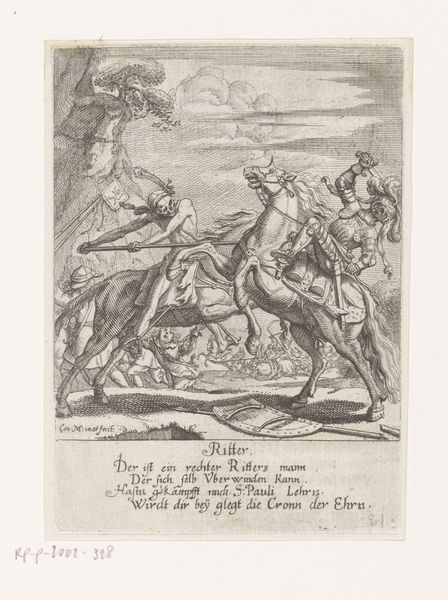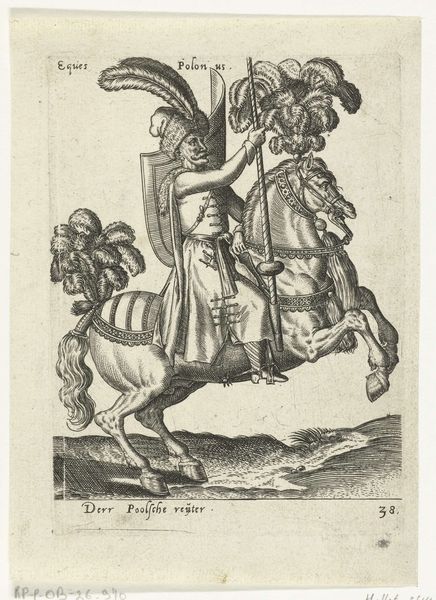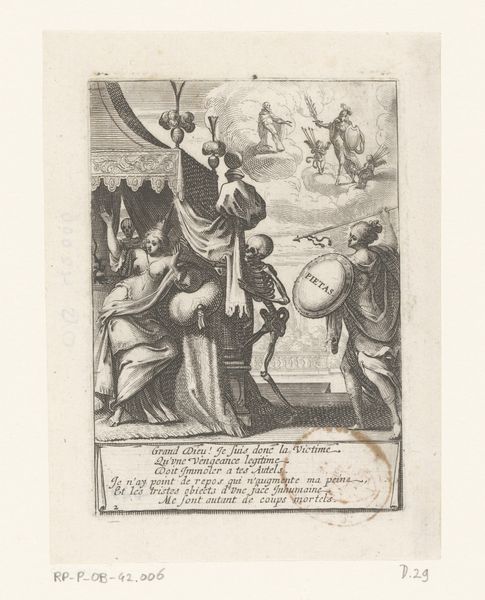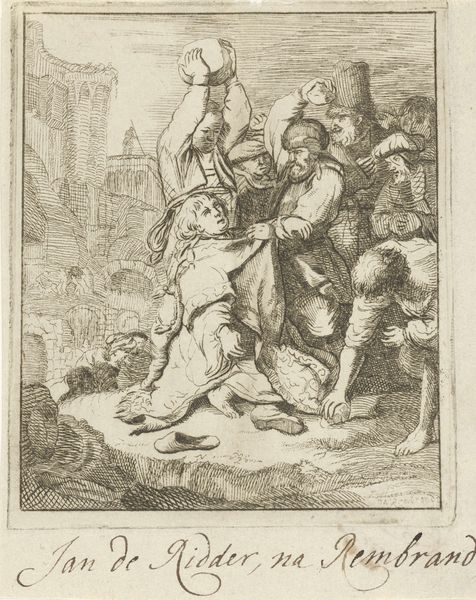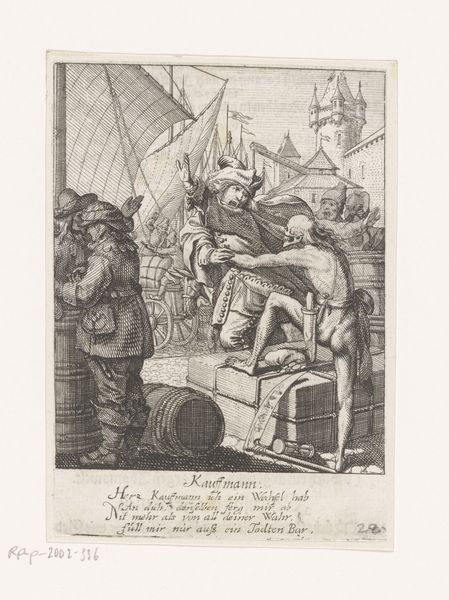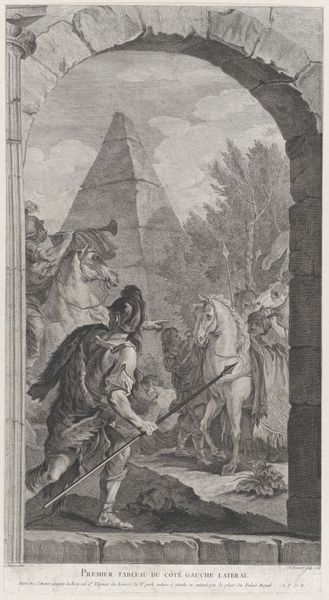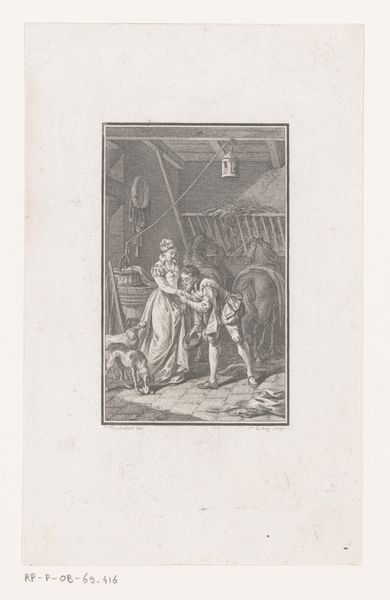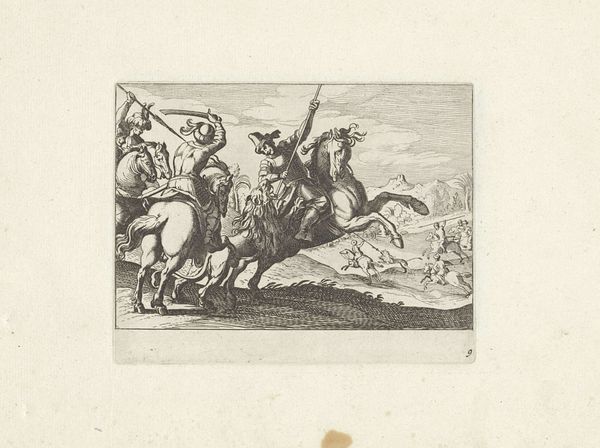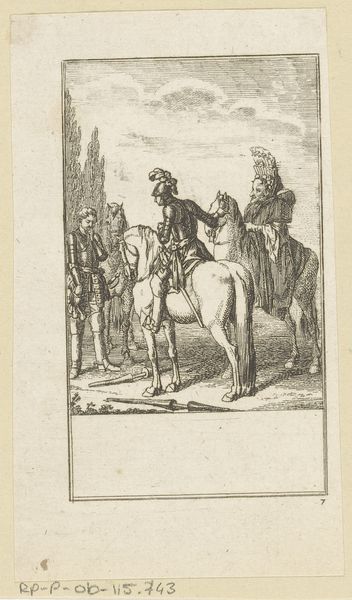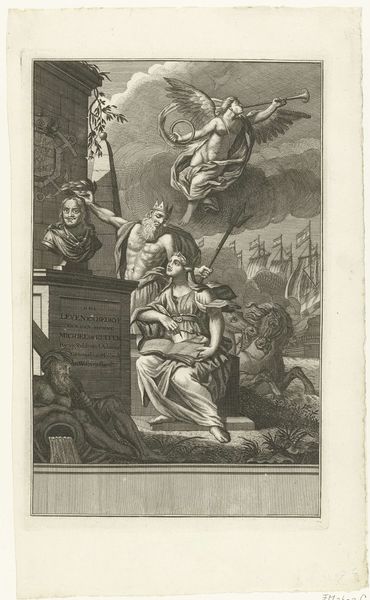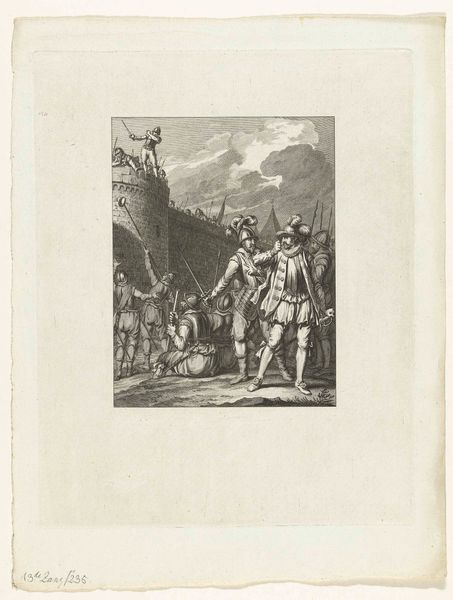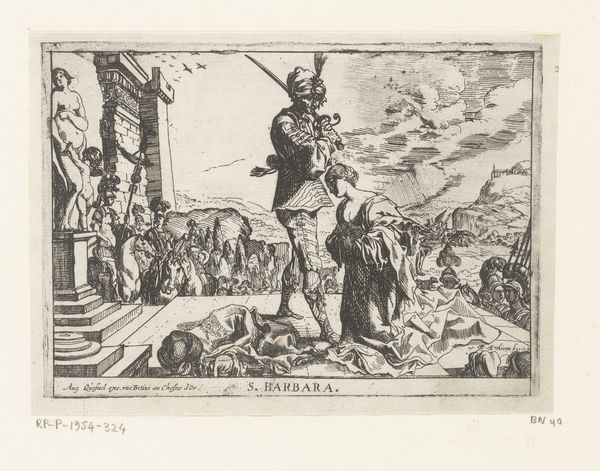
print, etching
#
narrative-art
#
baroque
# print
#
etching
#
figuration
#
history-painting
Dimensions: height 129 mm, width 90 mm
Copyright: Rijks Museum: Open Domain
Editor: Here we have Conrad Meyer’s 1650 etching, "Jew and Death," currently residing in the Rijksmuseum. The mood feels incredibly tense, even violent. What can you tell us about its historical context and intended audience? Curator: This print, like many others from the period, operates within a complex web of socio-political and religious biases. Consider its likely audience: predominantly Christian Europeans of the 17th century. The image plays on pre-existing anti-Semitic sentiments by visually associating a Jew with Death. The inscription beneath the image makes it clearer still by discussing the 'wrath of God' upon the Jewish people. Editor: So the artist is participating in harmful tropes through imagery? How did art function within society at that time? Curator: Precisely. Printmaking, especially, was a powerful tool for disseminating ideas and shaping public opinion. The relatively low cost of prints compared to paintings meant that images like this could reach a much wider audience, solidifying existing prejudices and contributing to a hostile environment for Jewish communities. What effect does the depiction of "Death" have on how it is understood, in contrast with the named figure? Editor: Portraying death as a skinny person grasping the man seems almost predatory. It really underscores a feeling of being cornered and attacked for the viewer. It is striking how imagery works to influence attitudes of populations. Curator: Absolutely. The "public role of art" in periods of societal discord provides ample insight into not only biases of people during that time, but serves as a teaching moment of recognizing such events. What have you gathered from this dialogue? Editor: I’ve gained a better understanding of how historical context is vital for unpacking difficult subject matters in art. I had not considered the accessibility and impact that printing can provide compared to art for wealthy families alone. Thank you.
Comments
No comments
Be the first to comment and join the conversation on the ultimate creative platform.
